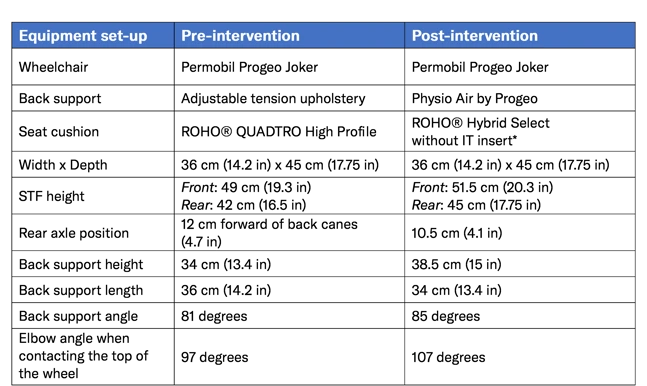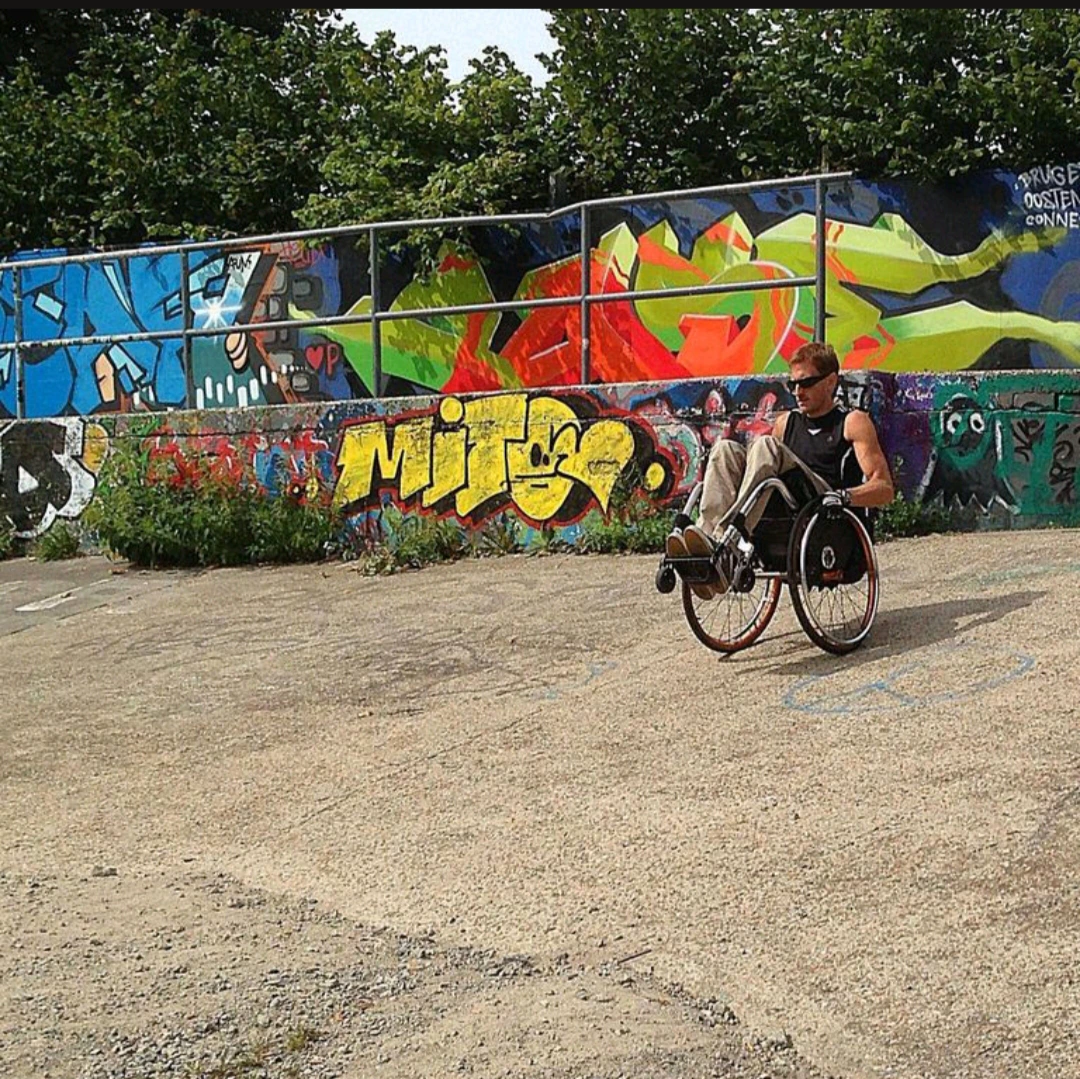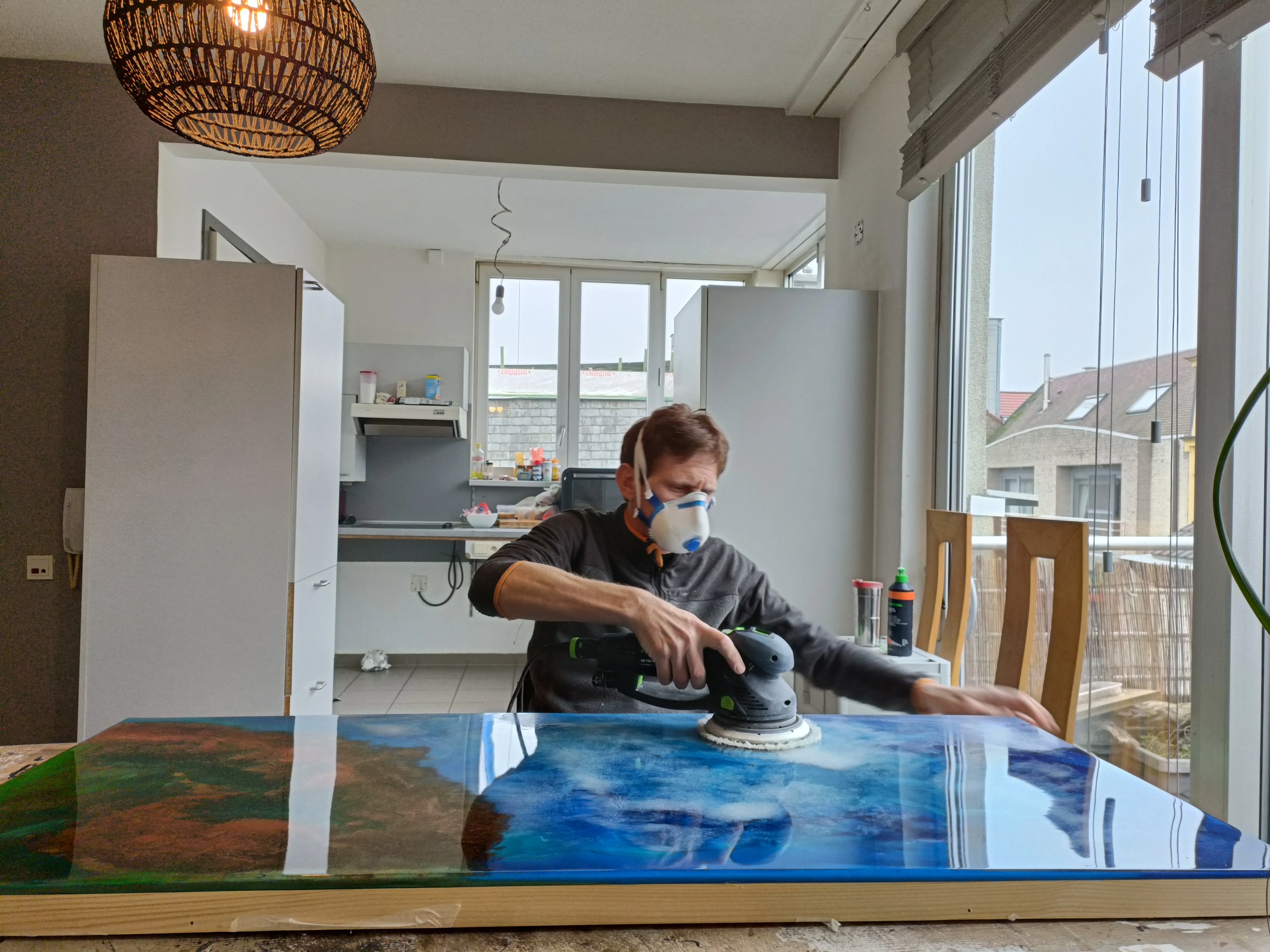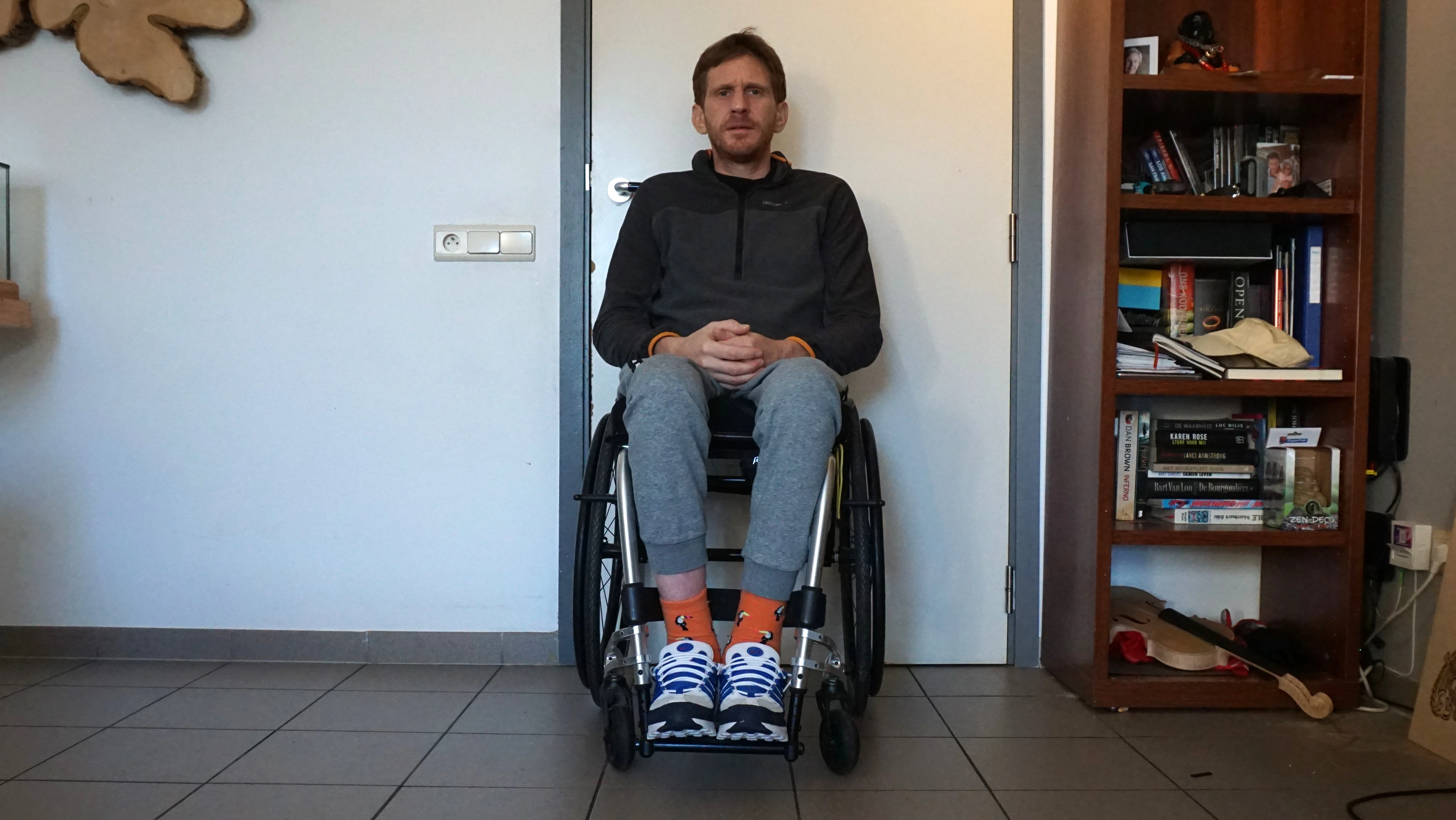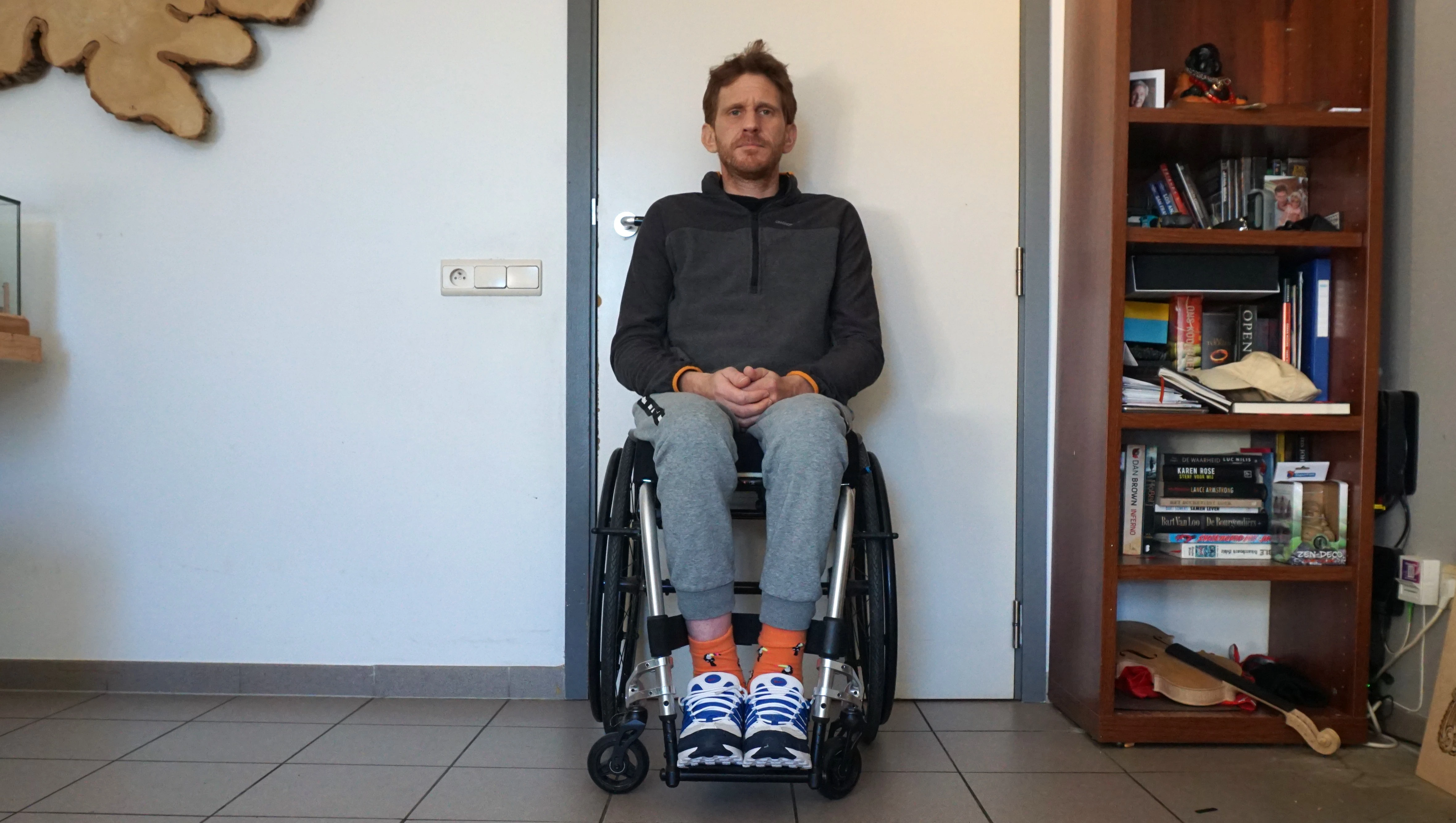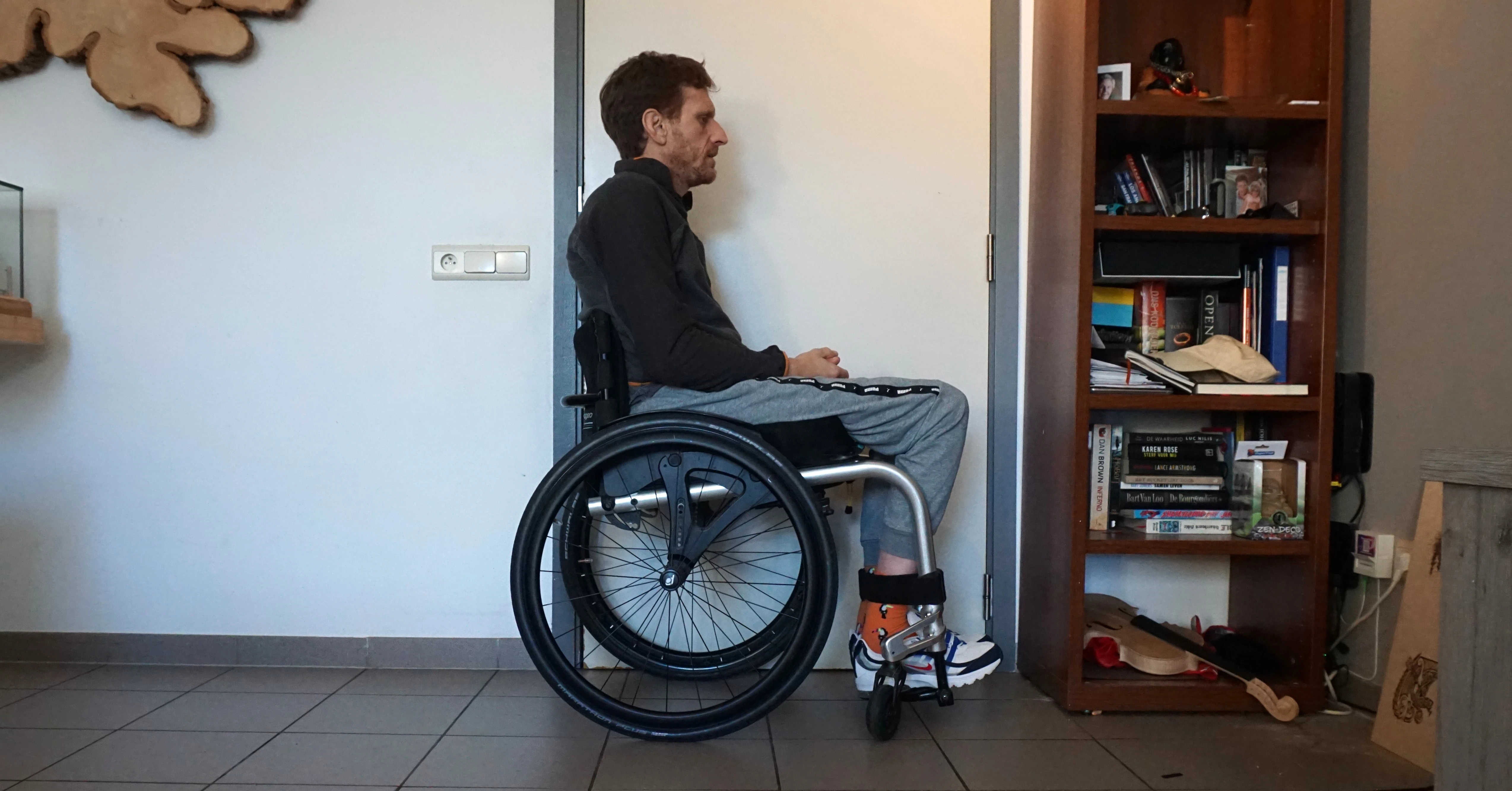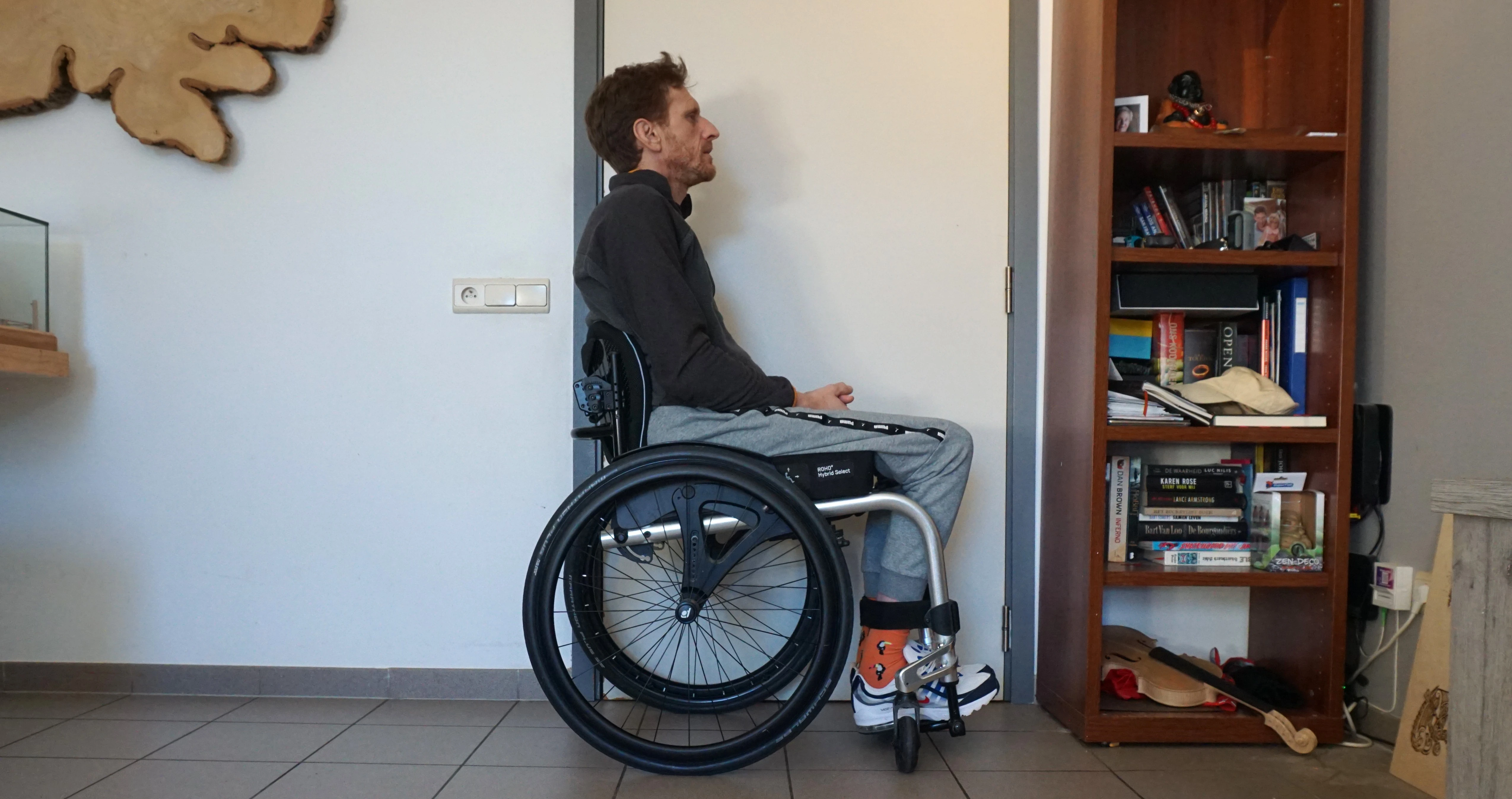- Clinical Research
- Cases of Excellence
- Case of Excellence: John
Case of Excellence: John

“It's always been important to be as free as I still can be.”
When we meet John, he shares with us that he has been experiencing limitations in his health and function related to his seating and wheeled mobility solutions. Through a collaborative approach between John, his clinical team and Permobil, adjustments were completed to his existing set-up and new equipment was installed. We followed John along this journey and here are the results of what he shared with us.
John is a 43 year old artist, welder, athlete, and world traveler who resides in Belgium. He is extremely independent and has always placed high value on being self-sufficient since his accident in 2005 which resulted in paraplegia of the trunk and lower extremities. He does have a medical history of recurring pressure injuries on his sacrum and spine as well as fluctuating levels of pain in the upper extremities.
Just as many individuals experienced, the global pandemic resulted in a reduction in activity level and travel for John. As a result, he experienced a variety of physiological and psychological changes.
It was hoped that new seating and wheeled mobility would aid in his healing and function, however, he still had the following limitations in body functions and structures, activities and participation.
”I was out all the time before. I was doing miles everyday and now I feel like I can’t do it anymore because if I would go out today and just ride with my wheelchair, tomorrow my shoulders would be completely wrecked.. I would wake up at night having to move my arms for two minutes for the pain to go away.”
